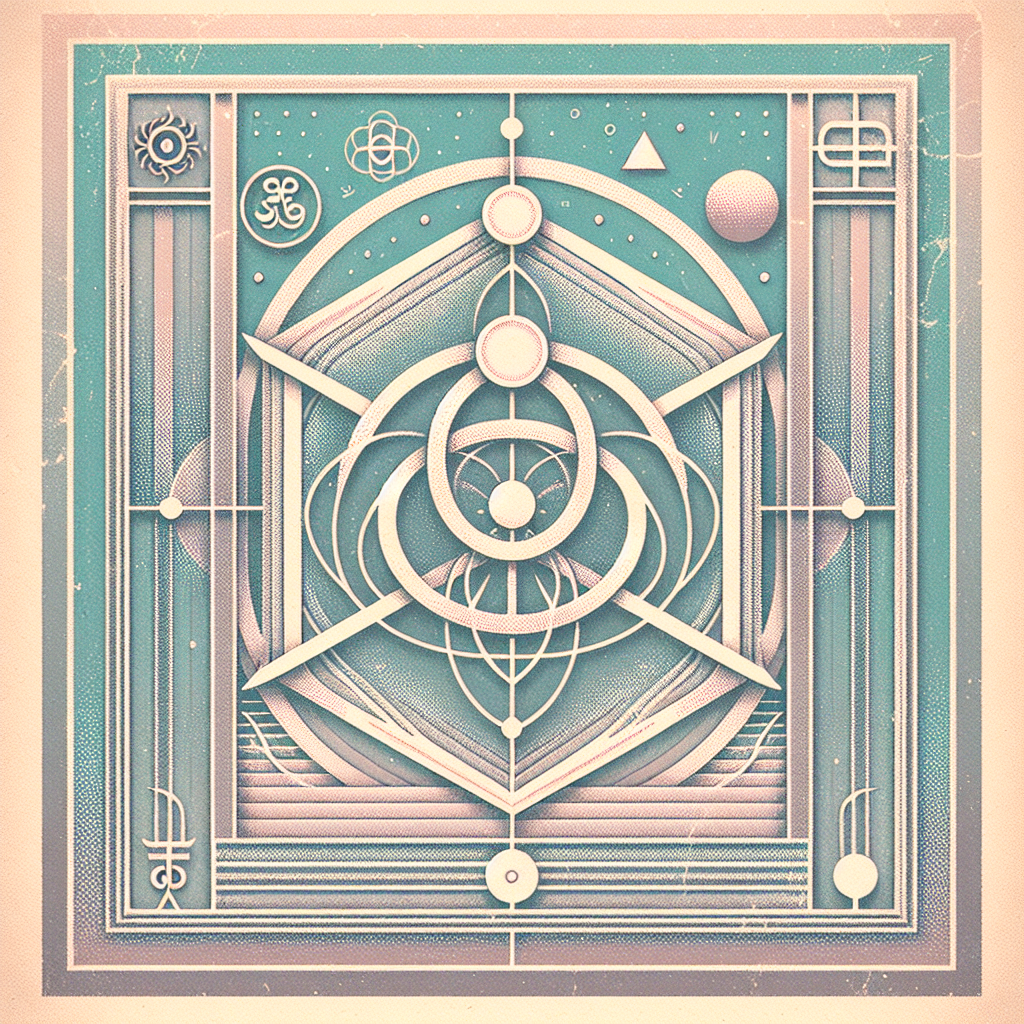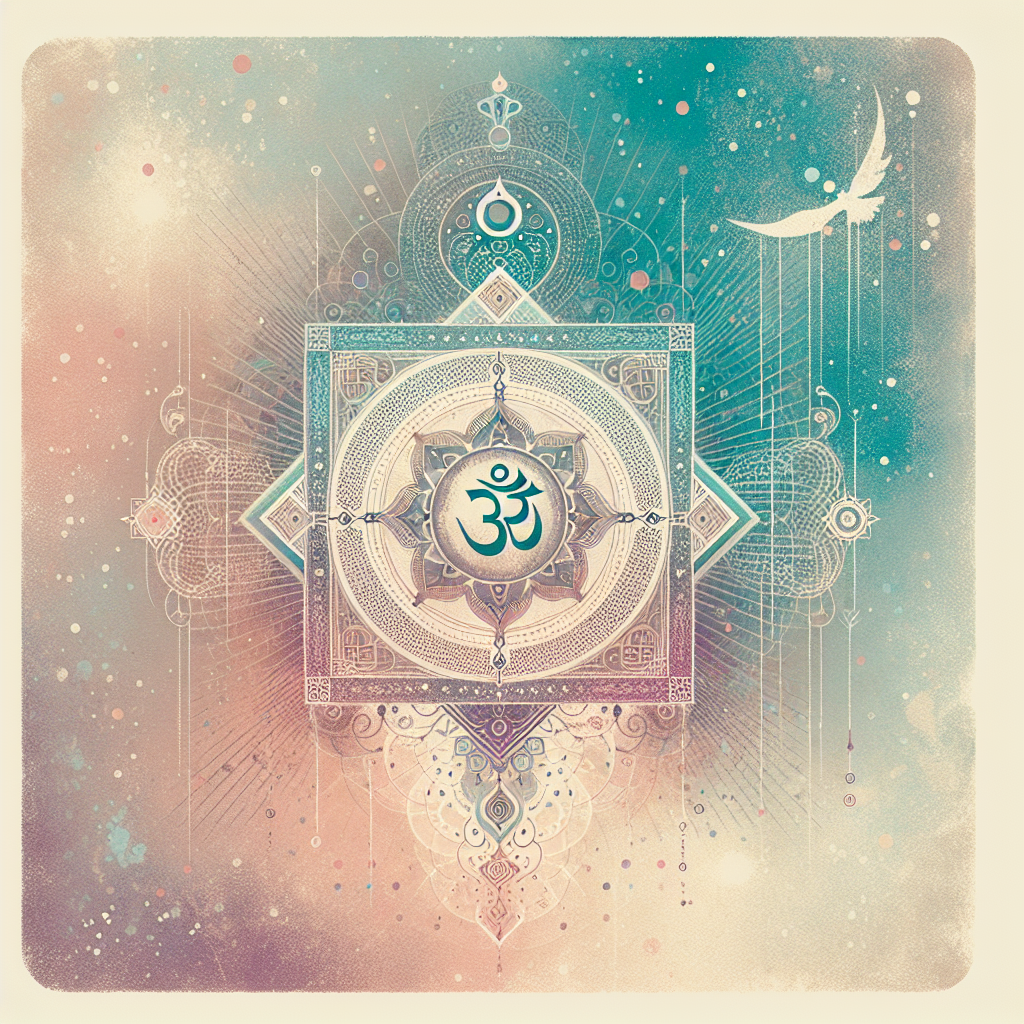
Brahman
Introduction
Brahman (Sanskrit: ब्रह्मन्, brahman; neuter noun) is a central idea in many Hindu philosophical traditions. It names the ultimate reality—the ground of being—that underlies and pervades the universe. It is distinct from Brahmā (Sanskrit: ब्रह्मा; masculine), the creator deity in later Hindu mythology, and from a Brahmin (brāhmaṇa), a member of the priestly class. These terms share a linguistic root but refer to different things.
The idea of Brahman appears in Vedic and early Upaniṣadic literature, with classic discussions in the Bṛhadāraṇyaka and Chāndogya Upaniṣads (circa mid–1st millennium BCE). In these texts, Brahman is described as the infinite, the imperishable, and the unconditioned—gesturing toward infinity—phrases later thinkers interpret in different ways. [1][2][4]
The Basic Idea
At its core, “Brahman” points to what is ultimate: the uncaused cause, the source and sustainer of all, and the reality not limited by time, space, or particular qualities. Many scholars connect the word to the root bṛh (“to grow, expand”), hinting at an intuition of boundless, expanding reality. While the exact nuance is debated, the classical point remains: Brahman is not a being among beings but the being of all beings—the “real” by which anything is real. [2][4]
The Upaniṣads present this through brief, powerful teachings that shape later Vedānta (Vedanta):
- One strand identifies Brahman with ātman (self), suggesting the deepest self is identical with ultimate reality.
- Another treats Brahman as the cosmic ground—the “unseen seer” and “unheard hearer” behind all phenomena.
These are not strict opposites; they are complementary angles that later schools systematize into full philosophies of Brahman. [1][2]
From these beginnings, classical Indian philosophers developed several positions:
- Nondualism (Advaita Vedānta): Within classical Vedanta, Brahman alone is ultimately real. The world of multiplicity is ultimately appearance, and the individual self (ātman) is not different from Brahman. [3]
- Qualified nondualism (Viśiṣṭādvaita Vedānta): In this Vedanta perspective, reality is one Brahman with distinguishing attributes; finite selves and the world are real as inseparable modes or the “body” of Brahman. [2]
- Dualism (Dvaita Vedānta): God (identified with Viṣṇu) and individual selves are eternally distinct. Brahman is a personal supreme being, and the world’s diversity is real. [2][4]
All agree on Brahman’s importance while differing on how to read unity, difference, and the status of the empirical world. [2][3][4]
How It’s Supposed to Work
Philosophical accounts link Brahman to causality, consciousness, and liberation (mokṣa). Since Brahman is defined as ultimate reality, each school explains how the world arises from it, how consciousness relates to it, and how knowledge or devotion leads to freedom.
Causality and world-appearance
- Advaita Vedānta: Distinguishes Brahman “without qualities” (nirguṇa) from Brahman “with qualities” (saguṇa). The absolute (nirguṇa) Brahman does not change; creation is an appearance (vivarta) conditioned by māyā (a beginningless power of projection). From the highest standpoint, Brahman neither creates nor changes. The world is experientially real but ultimately dependent—like a rope misperceived as a snake. [3]
- Viśiṣṭādvaita Vedānta: Brahman is both intelligent (efficient) and material cause. The cosmos is a real manifestation (pariṇāma) of Brahman’s nature; individual souls and matter are real, sustained modes of the one reality. God has infinite auspicious qualities (ananta kalyāṇaguṇa), and plurality enriches unity. [2]
- Dvaita Vedānta: Real difference holds between God, selves, and matter (the fivefold differences, pañcabheda). God (the supreme Brahman) is the efficient cause; matter is distinct and dependent. Creation is God’s ordering of distinct realities, not a transformation of Brahman. [2][4]
Consciousness and self
- Advaita: Pure consciousness (cit) is intrinsic to Brahman. The mind reflects that consciousness, giving the feel of personal awareness. Liberation comes when knowledge (jñāna) removes ignorance (avidyā) and one realizes the identity of ātman and Brahman—not by producing something new, but by removing error. [3]
- Viśiṣṭādvaita: The self is eternally distinct yet inseparable from Brahman; liberation is intimate union (prāpti) with the personal God. Knowledge, devotion (bhakti), and divine grace work together. Ethical life and ritual matter because the relation to Brahman is deeply relational, not only cognitive. [2]
- Dvaita: Liberation is nearness to God without merging; difference endures, and grace is central. Knowledge corrects error, while individuality remains within a theistic vision. [2][4]
Language and negation
Because Brahman exceeds ordinary description, language is used with care. Upaniṣadic formulas like “not this, not this” (neti neti) mark the limits of speech. Advaita uses a via negativa to deny limiting attributes while implying that Brahman is existence–consciousness–bliss (sat–cit–ānanda)—not as added properties, but as a pointer to the nature of the absolute. Viśiṣṭādvaita treats divine attributes as real and non-limiting, arguing that negation alone cannot ground devotion or ethics. Each school wrestles with how words point beyond themselves without collapsing into silence. [1][2][3]
Practice and realization
The Upaniṣads teach contemplative inquiry (vicāra), meditations (upāsanā) on cosmic correspondences, and the recitation/meditation on OṂ (AUM) as a sonic emblem of the whole. The Māṇḍūkya Upaniṣad maps the sounds of OṂ to waking, dreaming, deep sleep, and the “fourth” (turīya). Later Vedānta (Vedanta) joins these with scriptural study, ethics, devotion, and yogic methods. The aim is to remove ignorance, align the self with ultimate reality, and resolve suffering rooted in misidentification. [1][2][3]
Gently put, the traditions invite a shift in how we see—toward the background awareness or presence that connects all experience in Brahman.

Where It’s Used & Applied
Brahman operates across multiple domains:
-
Scriptural hermeneutics: In Vedic exegesis and Vedānta commentaries, Brahman is a key to reading revelation (śruti). Śaṅkara (Advaita), Rāmānuja (Viśiṣṭādvaita), and Madhva (Dvaita) wrote major commentaries on the Brahma Sūtras, Upaniṣads, and Bhagavad Gītā to argue for their visions of Brahman. These traditions remain active today. [2][3][4]
-
Ritual and devotion: Even where deity names (e.g., Viṣṇu, Nārāyaṇa, Śiva, Devī) are primary, many communities within hinduism understand their chosen deity as the supreme Brahman. In Śrī Vaiṣṇavism, for example, Viṣṇu–Nārāyaṇa is identified with Brahman and worshipped through liturgy, temple service, and home ritual. Theologies of presence (archā) affirm that the divinity in temple icons is the same ultimate reality that pervades all. [2][4]
-
Contemplative practice: Meditative inquiry on self and reality often uses Upaniṣadic mahāvākyas (e.g., “That thou art” in the Chāndogya) under a qualified teacher, together with ethical and concentration practices. These are not medical therapies. While some report psychological benefits, robust clinical evidence specific to “meditating on Brahman” as an intervention is limited and should not be assumed. [1][3]
-
Philosophy and comparative thought: In modern scholarship, Brahman anchors debates about monism vs. theism, consciousness, and metaphysics within Vedanta and beyond. Some argue for an impersonal absolute, others for a personal God, and still others for a “ground of possibility” beyond that split. [2][3]
-
Everyday religious life: The sense that the divine pervades all—often expressed through formulas linking self and whole in reference to Brahman—shapes ethics (non-harm, truthfulness), duties (dharma), and remembrance (smaraṇa) through divine names and symbols like OṂ. Practices vary by region, community, and lineage. [2][4]
What We Know Today
Points of consensus and ongoing debate help situate Brahman now:
-
Textual origins and development: The earliest clear references to Brahman as ultimate reality appear in the Bṛhadāraṇyaka and Chāndogya Upaniṣads, where Yājñavalkya and others discuss self and the unconditioned ground. These likely date to the late Vedic period (mid–1st millennium BCE). Later Upaniṣads extend and reinterpret earlier themes. Philology supports the antiquity and layered composition of these texts, which anchor Vedānta. [1]
-
Etymology and semantics: The link to bṛh (“to expand”) is traditional and plausible, though modern philology is cautious. In context, the term’s meaning moves from early Vedic senses of power, prayer, sacred utterance to the Upaniṣadic sense of ultimate reality. This shift is gradual. [2][4]
-
Competing metaphysical models: Advaita, Viśiṣṭādvaita, and Dvaita remain durable frameworks for thinking Brahman. They offer coherent accounts of unity and plurality, cause and effect, self and God, while debating ignorance (avidyā), grace, and how to rate the empirical world. [2][3][4]
-
Conceptual tools: Distinctions like nirguṇa/saguṇa (without/with attributes), paramārthika/vyavahārika (ultimate/empirical truth), and vivarta/pariṇāma (apparent vs. real transformation) structure the discourse. They help reconcile scripture that both denies and ascribes qualities to Brahman. Each school’s choices reflect its interpretive aims and vision of liberation. [2][3]
-
Sound and symbol: The Upaniṣadic reading of OṂ as encompassing waking, dreaming, deep sleep, and the “fourth” (turīya) shapes practice and theory. Scholars stress these are teaching models, not empirical claims about brain states. Their value is to guide attention beyond habitual identifications to the background awareness many traditions identify with Brahman. [1]
-
Method and evidence: Because Brahman is “ultimate,” it is not straightforwardly testable. Indian traditions appeal to pramāṇas (means of knowledge): scriptural testimony (śabda), inference (anumāna), and direct contemplative insight (aparokṣānubhūti) under discipline. Modern studies assess texts, arguments, practices, and communities rather than laboratory proof. Where research is cited (e.g., on meditation), it concerns general practice, not specific validation of metaphysical claims about Brahman. [2][3]
-
Disambiguation and contemporary language: Confusion persists among Brahman (ultimate reality), Brahmā (deity), and Brahmin (social category). Sources stress both grammatical and conceptual differences. When teachers use terms like “God,” “Absolute,” or “Consciousness,” they often translate Brahman for broader audiences; clarity requires keeping original contexts in view. [2][4]
-
Global reception: In the modern period, Brahman entered global discourse through translations, comparative studies, and diasporic communities. Scholars like Patrick Olivelle provide reliable access to primary texts; surveys like Gavin Flood’s map interpretations. Popular writing may compress this diversity into a single “Eastern monism,” but academic work highlights plurality and ongoing debate. [1][2]
-
Practical implications: Reflection on Brahman often challenges reductionism—refusing to treat persons as mere aggregates or the world as inert. In Advaita, this leads to recognizing self as the unconditioned ground; in Viśiṣṭādvaita and Dvaita, to devotion to a supreme, personal reality. Ethical implications commonly include non-harm, truthfulness, and devotion as expressions of alignment with ultimate reality. These are normative-philosophical claims, not medical advice or guaranteed outcomes. [2][3][4]
In Sum
“Brahman” names a family of interrelated claims about what is most real, first voiced in ancient texts and refined in sophisticated philosophies. The schools disagree—productively—on how unity and plurality, consciousness and world, transcendence and immanence fit together and are lived. Across these differences, Brahman functions as a highest principle that makes sense of the cosmos and human consciousness, orienting practice toward insight or communion taken to be liberative. In this light, the traditions invite a quiet transformation: a clearer seeing of what connects all things, and of who we most deeply are. [1][2][3][4]
Sources
[1] Patrick Olivelle (trans.), The Early Upaniṣads: Annotated Text and Translation, 1998. Authoritative translations with notes on dating, terminology, and core teachings on Brahman and ātman. Oxford University Press. https://global.oup.com/academic/product/the-early-upanisads-9780195124354
[2] Gavin Flood, An Introduction to Hinduism, 1996. Comprehensive academic overview of Hindu traditions, including clear summaries of Vedānta schools and interpretations of Brahman. Cambridge University Press. https://www.cambridge.org/9780521438780
[3] Eliot Deutsch, Advaita Vedānta: A Philosophical Reconstruction, 1969 (reprint eds. later). Classic analytic exposition of Advaita’s claims about Brahman, knowledge, and world-appearance. University of Hawai‘i Press. https://uhpress.hawaii.edu/title/advaita-vedanta-a-philosophical-reconstruction
[4] Encyclopaedia Britannica, “Brahman,” n.d. Concise, reliable reference on definitions, distinctions (Brahman/Brahmā/Brahmin), and major doctrinal views. Encyclopaedia Britannica, Inc. https://www.britannica.com/topic/Brahman-Hindu-concept